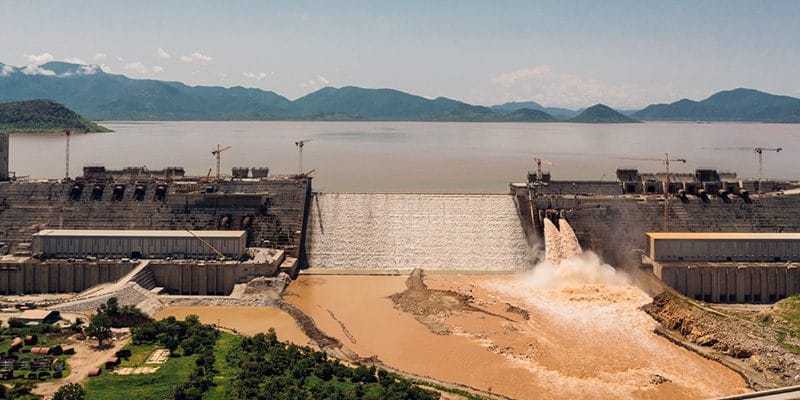In Summary
- Africa’s largest dam, the Grand Ethiopian Renaissance Dam, produces 6,450 MW, which is more than the combination of other African countries’ dams on this list.
- African Dams often represent geopolitical leverage, national pride, and long-term development planning, but they can also come with serious trade-offs.
- The Aswan High Dam in Egypt is the oldest and once the largest in Africa, completed in 1970. For Egypt, it was a symbol of National strength, shaped farming, and gave it control over the Nile’s flow.
Deep Dive!!
In Africa, Hydroelectric power is one of the most resourceful energy sources. Some African countries still utilize fossil-fuel-based and thermal generation, but Hydroelectric plants still prove to be a cleaner and long-term alternative. Beyond electricity, it has supported regional corporations, trade, and agriculture.
Africa holds about 10% of the world’s hydropower potential owning vast rivers like the Nile, Congo, Niger. Countries like Ethiopia have fully utilized this, owning 3 of the largest dams reflecting the base of its national strategy and infrastructure goals.
This ranking of African countries with the largest hydroelectric power stations (Dams) is based on available data measured on total megawatt (MW) capacity. Each dam tells a story of long-term investment, growth, and planning in Africa’s energy future.
10. Nigeria – Kainji Dam

The Kainji Dam was commissioned in 1968 and was the pride of West Africa. It is located on the Niger river in Niger state. With a capacity of 760 megawatts, it powers rural electrification and promotes industrial growth. Although it operates below its full potential due to turbine issues, under maintenance, and sedimentation, it still currently serves as part of the national grid.
9. Ghana – Akosombo Dam
Ghana’s Akosombo Dam was completed in 1965 on the Volta River. The dam created Lake Volta, one of the world’s largest man-made lakes. With a capacity of 1,020 megawatts, it powers Ghana’s household electricity and industries like iron smelting. The Dam has helped support neighboring countries like Benin and Togo in its early years before the increasing pressure on it that led to its power-sharing challenges.
8. Ethiopia – Tekeze Dam
The Ethiopia Tekeze Dam was one of its large-scale experiments. Commissioned in 2009 on the Tekeze River, it’s one of Africa’s highest double arch dams. Having a capacity of 1,200 megawatts, it still contributes significantly to Ethiopia’s national grid. Despite its location in the northern region of Ethiopia, Tigray, which poses logistical and political challenges, the dam still supports Ethiopia’s long-term development plans in making hydroelectricity central.
7. Sudan – Merowe Dam
Merowe Dam is the largest electricity-generating facility in Sudan. Commissioned in 2009, it is located on the Nile River. With a capacity of 1250 megawatts, it’s important to Sudan’s national grid, powering urban centers along the Nile and agriculture. It was built to reduce Sudan’s reliance on expensive fossil fuels.
6. Zambia / Zimbabwe – Kariba Dam
Located on the Zambezi River, which is between Zambia and Zimbabwe, the Kariba Dam symbolizes cross-border cooperation. It’s one of the few African binational power stations. With a capacity of 1,626 megawatts, it still continues to serve as an integral generation capacity, especially for Zimbabwe, despite its recent ageing structural challenges on infrastructure and falling water level.
5. Democratic Republic of the Congo – Inga Dams
The Inga Dams have two major dams located on the Congo River. Often considered the most promising hydroelectric location, the dams both produce a capacity of 1,775 megawatts. There’ve been discussions for decades on the building of Inga III and Grand Inga, but due to political instability and financing issues, it is yet to be solidified.
4. Ethiopia – Gilgel Gibe III Dam
The Gibe III Dam is the second-largest dam in Ethiopia. The Dam was completed in 2016, and it is located on the Omo River. It has a capacity of 1,870 megawatts and it is one of the major power producers for the national grid. It represents Ethiopia’s dedication to becoming a major power in Africa. There were controversies about its impact on the ecosystem and downstream communities, especially in Kenya’s Lake Turkana region.
3. Mozambique – Cahora Bassa Dam
The Cahora Bassa Dam is one of the oldest and most stable dams in Southern Africa. It is located on the Zambezi River, was completed in the 1970s, and survived the Mozambique civil war. Generating a capacity of 2,070 megawatts, it exports most of its electricity to South Africa. For Mozambique, it is a crucial foreign exchange earner.
2. Egypt – Aswan High Dam
Aswan High Dam was completed in 1970 and it sits across the dam. It helped Egypt manage floods, power homes, and irrigate farmland with a capacity of 2,100 megawatts. The dam also led to the formation of one of the world’s largest reservoirs, Lake Nasser. The Aswan High Dam is symbolic of the nation’s self-reliance and strength, even though it currently only generates a small part of Egypt’s current energy mix.
1. Ethiopia – Grand Ethiopian Renaissance Dam (GERD)
The Grand Ethiopian Renaissance Dam tops the list with a large gap. It is built on the Blue Nile, and its construction began in 2011. Although its full capacity is yet to be reached, the dam will be generating at a capacity of 6,450 megawatts. Once it’s fully operational, GERD is expected to supply power not just to Ethiopia but also to East and North Africa. Ethiopia has strongly positioned itself as Africa’s undisputed hydroelectric leader.
https://www.africanexponent.com/top-10-african-countries-with-the-largest-hydroelectric-power-plants-dams/


